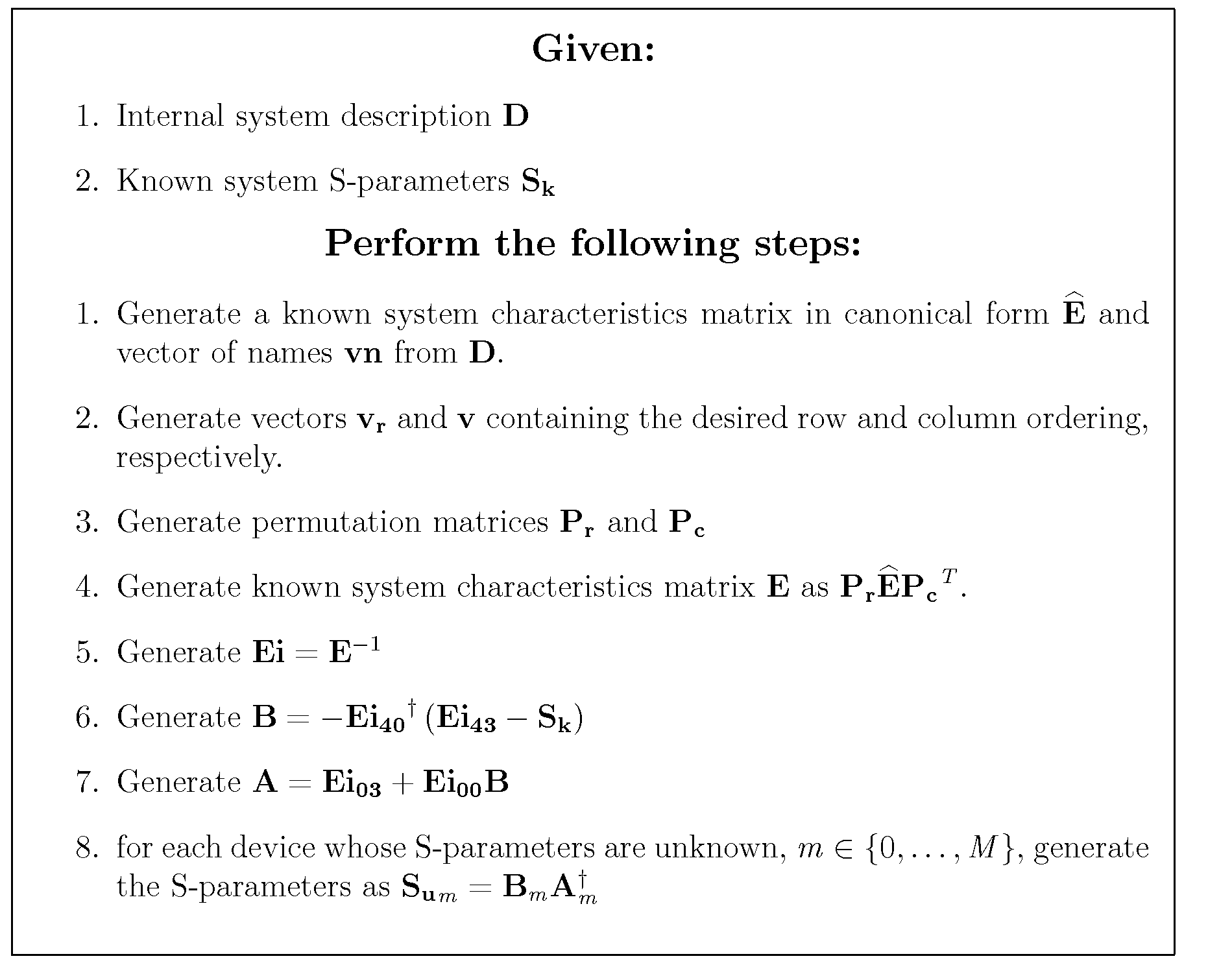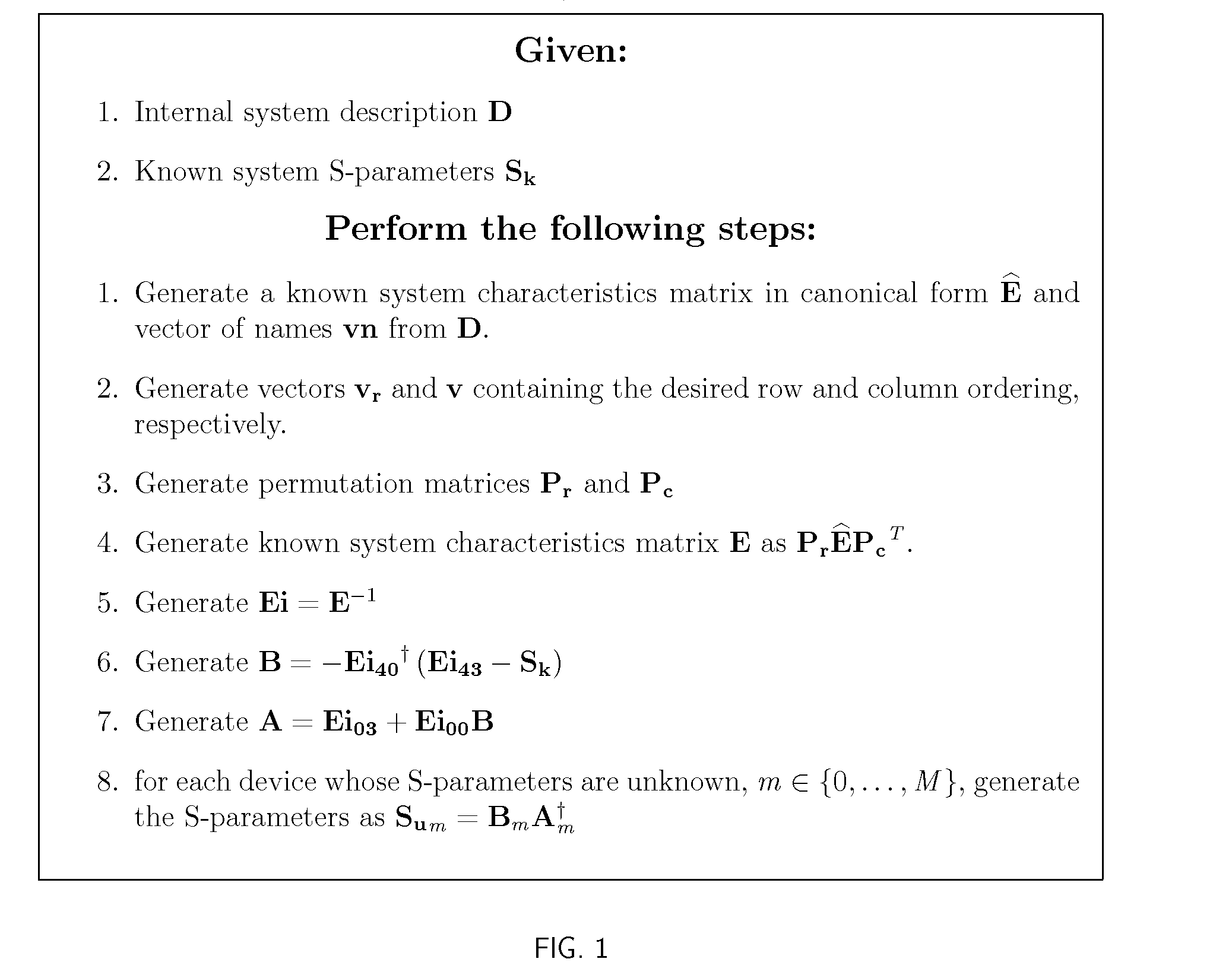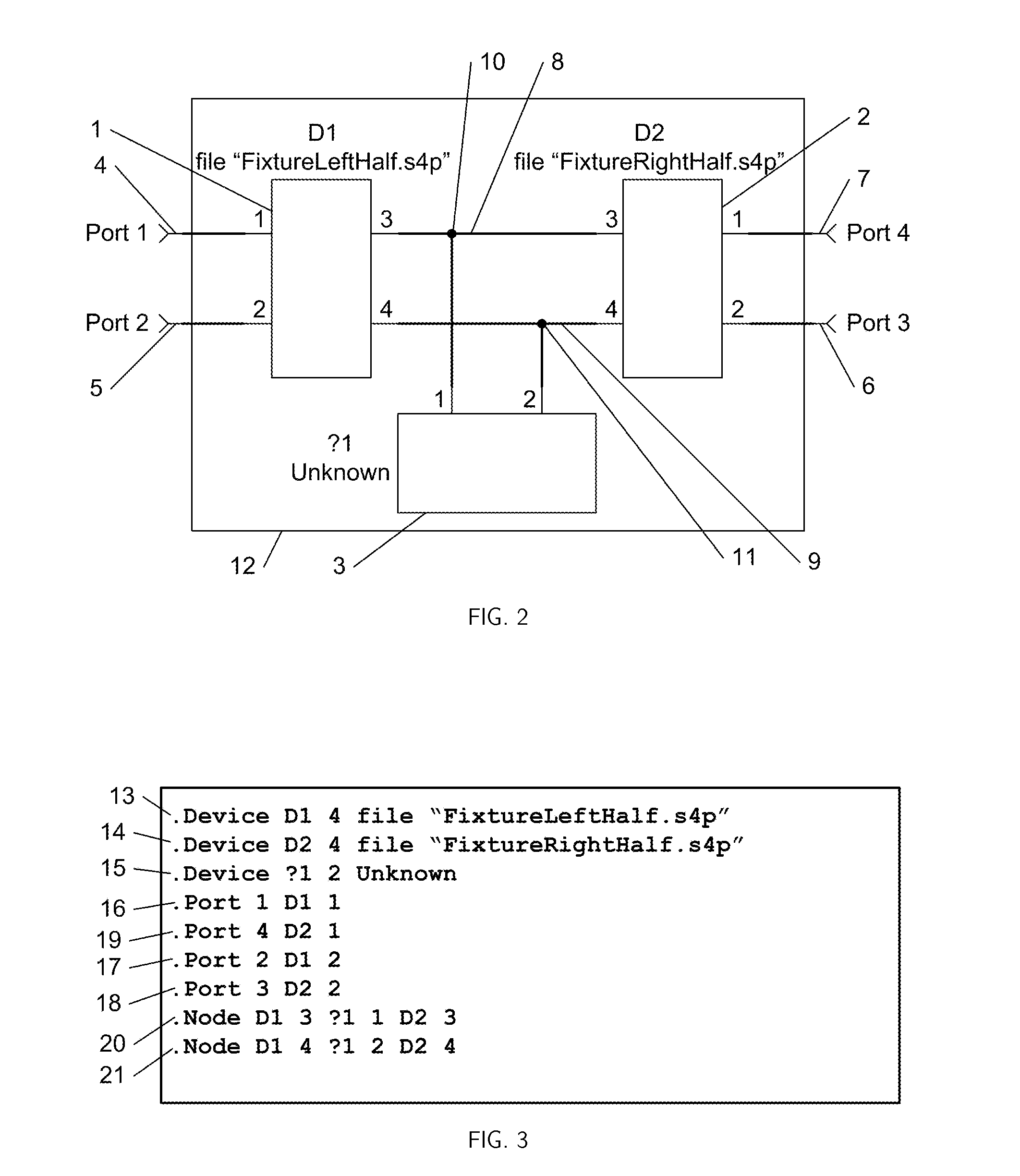Method for De-embedding Device Measurements
a technology of de-embedding and measurement method, which is applied in the direction of resistance/reactance/impedence, instruments, digital computer details, etc., can solve the problems of physical system, limited connection methods to coaxial connections, and physical systems, so as to achieve the effect of actual system and testing devi
- Summary
- Abstract
- Description
- Claims
- Application Information
AI Technical Summary
Problems solved by technology
Method used
Image
Examples
Embodiment Construction
[0034]A detailed description of the invention will now be provided, making reference to the attached drawings in which like reference numbers refer to like structure or steps.
[0035]In accordance with the present invention, one is preferably provided with a system description and a set of known S-parameters measured at ports of this system. These various system descriptions are determined in a manner known to one of ordinary skill in the art, and may be provided in accordance with various known testing or mathematical model methods. In accordance with the invention, such a system description is considered to be an abstract term representing a description of a network. A network is comprised of devices, nodes, and system ports. A device is defined abstractly as a box with ports. Every device has a name, ports, and characteristics. A device's name is unique and serves to identify it within the network. The ports of the device are where signals enter and exit the device. The characteris...
PUM
 Login to View More
Login to View More Abstract
Description
Claims
Application Information
 Login to View More
Login to View More - R&D
- Intellectual Property
- Life Sciences
- Materials
- Tech Scout
- Unparalleled Data Quality
- Higher Quality Content
- 60% Fewer Hallucinations
Browse by: Latest US Patents, China's latest patents, Technical Efficacy Thesaurus, Application Domain, Technology Topic, Popular Technical Reports.
© 2025 PatSnap. All rights reserved.Legal|Privacy policy|Modern Slavery Act Transparency Statement|Sitemap|About US| Contact US: help@patsnap.com



